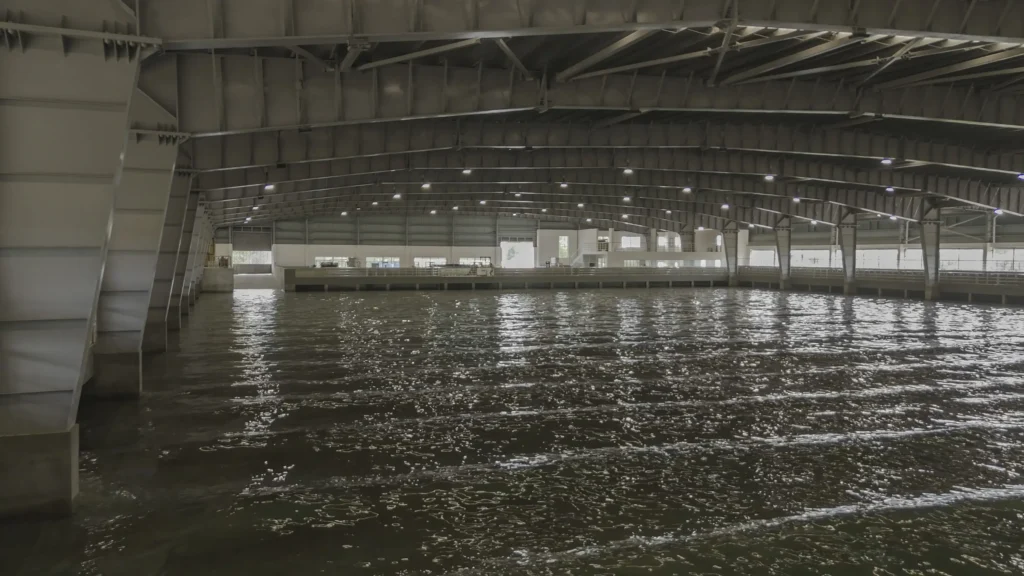Blog Credit : Trupti Thakur
Image Courtesy : Google
New Research Facility of IIT Madras- Shallow Wave Basin Research Facility
The Indian Institute of Technology-Madras (IIT-M) has recently inaugurated Asia’s largest shallow wave basin research facility. This development is located at the Discovery satellite campus in Thaiyur, approximately 36 km from the main IIT-M campus. The facility is designed to meet the research and industry requirements of India, particularly in coastal engineering and port management.
Facility Overview
The shallow wave basin is a multidirectional structure capable of simulating complex wave and current interactions. It serves as a vital tool for addressing challenges faced by Indian ports and waterways. The facility was established by the National Technology Centre for Ports Waterways and Coasts (NTCPWC), which is the technology arm of the Ministry of Shipping, Government of India.
Indigenous Development
Most components of the shallow wave basin were developed indigenously. Professor K. Murali from the Ocean Engineering department stated that this facility eliminates the need for foreign technology to generate laboratory waves. The majority of the wavemaker’s fabrications were completed at IIT-Madras, showcasing the institute’s capabilities in engineering and research.
Research and Applications
The facility can be utilised for various research purposes, including the testing of coastal structures and analysing the impact of climate change. It supports projects related to harbour and offshore engineering, as well as inland waterways. The unique mobile wavemaker allows for multiple simultaneous experiments, enhancing the facility’s versatility.
International Collaboration
The establishment of this facility is expected to elevate IIT-Madras’ status on the global stage. It has the potential for encouraging international collaboration in marine science and engineering. The facility will enable groundbreaking research across various disciplines.
Future Prospects
IIT-Madras aims to leverage the knowledge gained from this facility to assist other Indian institutes in developing their own research centres. This initiative aligns with the government’s plans for new ports and coastal engineering projects. By providing effective solutions to industry challenges, the NTCPWC will contribute to the growth of maritime transportation at multiple levels.
- NTCPWC stands for National Technology Centre for Ports Waterways and Coasts.
- IIT-Madras is located in Tamil Nadu, India.
- Thaiyur is a suburb of Chennai.
- Professor K. Murali is a key figure in the Ocean Engineering department.
- The facility can simulate wave periods from 5 to 18 seconds.
Key Benefits of the Facility
The shallow wave basin offers numerous advantages for research and industry. It facilitates the testing of various coastal structures and allows for post-impact analysis. The facility is particularly relevant for assessing the effects of climate change and developing large solar floating plants. Its capacity to handle multiple projects simultaneously makes it a unique asset in the field of maritime research.
Blog By : Trupti Thakur

09
JanNew Research Facility Of IIT Madras
Jan 09, 2025Recent Blog
The MAHA-EVMay 07, 2025
The Project Milestone of ITERMay 06, 2025
NeuraLink’s Speech Restoration TechnologyMay 05, 2025
The Mini Reasoning Model O3 And O4May 01, 2025
The Llama APIApr 30, 2025




